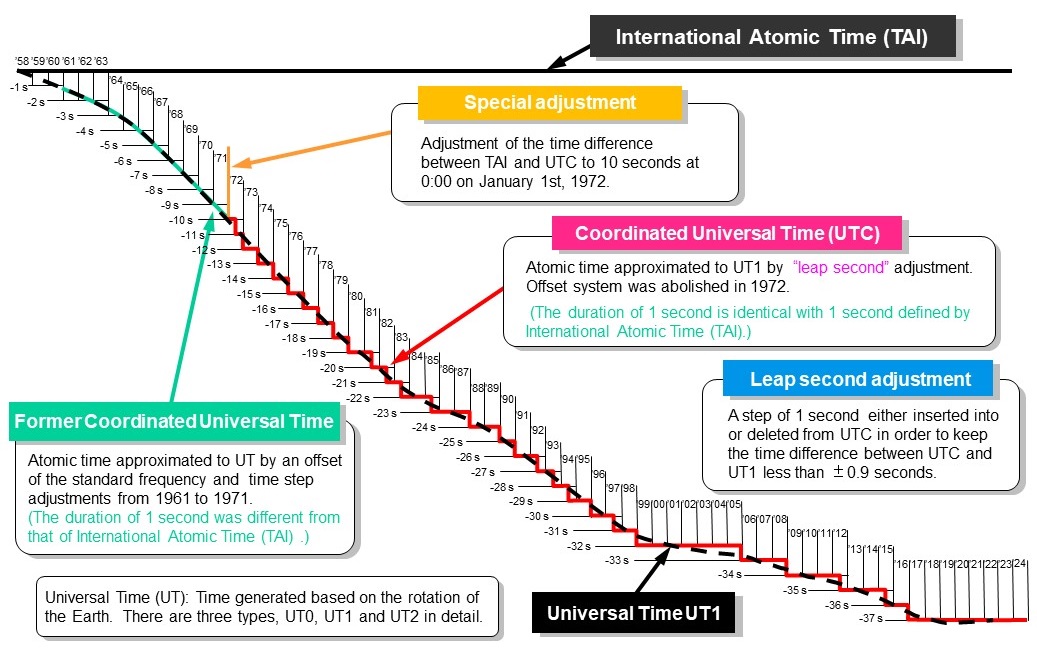Mission of Japan Standard Time Group
Coordinated Universal Time (UTC), and Leap Seconds
- Definition of a Second
Definition of a second: The duration
of the unit “second” was first defined based on an ephemeris time, which is
tied to the rotation and the orbital motion of the earth. The definition in
terms of frequency of atomic radiation was replaced with the International
System of Units (SI) in 1967.
The second is defined in the SI as “the duration of 9 192 631 770 periods
of the radiation corresponding to the transition between two hyperfine
levels of the ground state of the cesium-133 atom.”
- International Atomic Time (TAI)
The time scale created by the
atomic clocks is referred to as atomic time.
TAI was inaugurated its origin at 0:00, January 1, 1958, at 0:00 by synchronizing
to UT2. The TAI is decided by calculating a weighted average of the times of atomic
clocks in the world.
- Coordinated Universal Time (UTC) and Adjustment for Leap Seconds
Our daily lives are deeply related to the motion of the Sun. Time scale used in daily life is atomic time. Therefore, Atomic time should bring close to Universal Time (UT).
This is called the Coordinated Universal Time (UTC).
Since the rotation of the Earth is influenced by natural phenomena such
as tidal friction, time difference between UT and UTC is apt to occur.
Therefore one second is either inserted into or deleted from UTC in order
to keep the time difference between UTC and UT below 0.9 seconds.
This is referred to as a “leap
second.”
Leap second adjustment was introduced to UTC after the special adjustment
carried out in 1972. Leap second adjustments were performed 27 times from
1972 to January 2017. All adjustments were done by inserting a second to the UTC
so far, and now the UTC lags 37 seconds behind the TAI.

